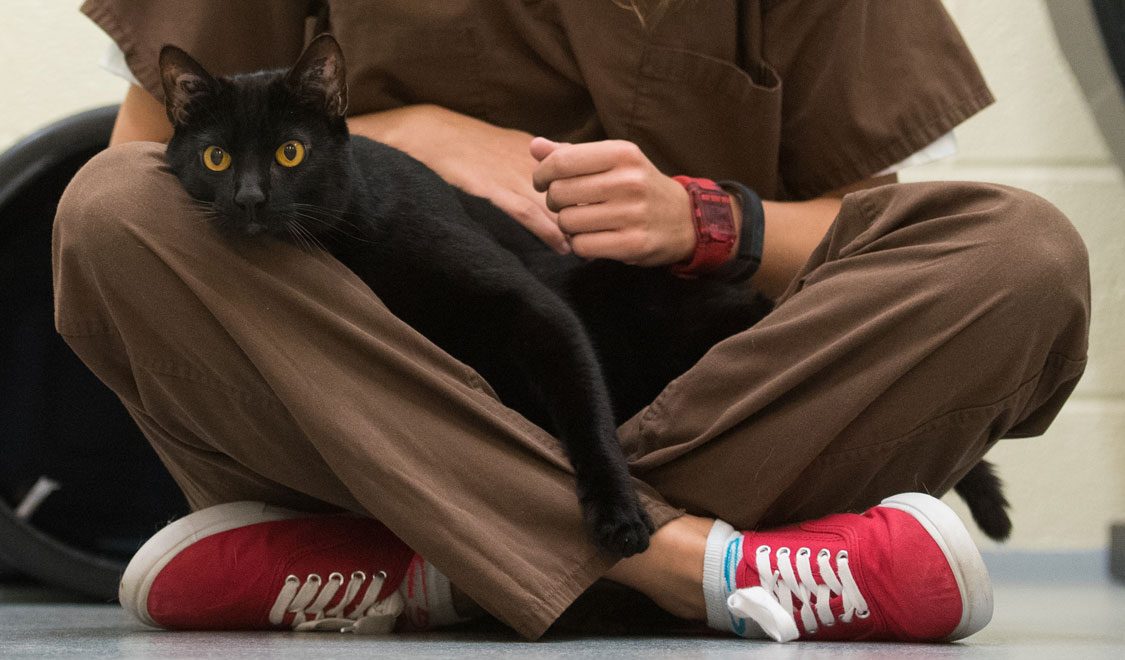15 Remarkable Feline Facts for National Cat Day

Though they may not beg for the attention, Oct 29 is officially National Cat Day.
At the North Carolina State University College of Veterinary Medicine (CVM), every day is cat day. We treat cats as part of the Veterinary Hospital’s small animal services, which include nutrition, cardiology, orthopedic surgery, oncology and ophthalmology. The hospital also offers clinical trials for cats, including research into feline arthritis, gastrointestinal illnesses and respiratory distress.
We love cats in the United States. Americans own an estimated 74 to 96 million cats (about 10 million more than dogs), which means more than a third of American households include a cat.
So what makes cats so special? A lot.
- Fighting like cats and dogs? It doesn’t have to be that way. A 2008 study featured in the journal Applied Animal Behaviour Science found that if a cat is adopted before a dog and if they’re introduced when still young, there’s a strong chance they’ll get along fine.
- Cats can move the front and rear halves of their bodies in opposite directions, thanks to having 517 muscles.
- A reason to be jealous: A healthy mature cats spends about 15 percent of its life in deep sleep and 50 percent in light sleep. Another reason to be jealous: Cats become fully alert faster than any other animal.
- A reason not to be jealous: Cats lack the taste receptor that recognizes “sweet.”
- Cats can vocalize 100 sounds. Dogs? Just 10.
- They could be older than you think. Cats were once thought to have been originally domesticated in Egypt about 4,000 years ago, but recent research suggests that semi-wild cats lived close to farmers in China around 5,300 years ago.
- So emo: Cats and humans have almost identical parts of the brain that control emotion. Cats also have more nerve cells in the visual parts of the brain than humans and most other mammals.
- A cat can jump about six times its length — more than 8 feet in a single bound. Tails help with balance.
~Jordan Bartel/NC State Veterinary Medicine
- Categories:


